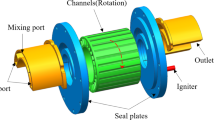Abstract—
The application of an electricity-generation technology involving the use, in a so-called organic Rankine cycle (ORC), of low-boiling working fluids holds promise for many fields of science and engineering in Russia. Many industrial and technological processes and operation of mechanisms and devices are often accompanied by releasing a large amount of low-grade (rejection) heat. As a rule, this heat is not usefully utilized and dissipates in the environment. Recovering the heat of exhaust gases from gas-turbine engines and diesel-generators in motor-road, railway, marine, and river transport; in gas transportation systems; in military engineering; etc. is one of the most promising application fields of this technology. In particular, an analysis of the technological parameters characterizing the operation of modern shipboard installations makes it possible to judge about the applicability of the ORC technology for improving their energy efficiency. However, the need to develop compact heat exchangers, which are designed through numerically analyzing the boiling and condensation of low-boiling working fluids (that are in themselves complex thermodynamic phenomena), is one of the most serious factors impeding the application of ORC installations in transport vehicles. The article presents a calculation procedure for preliminary designing the heat exchangers for ORC installations represented by a refrigerant vapor generator and a refrigerant condenser. The proposed procedure, which is based on the method of successive approximations, makes it possible to take into account the variability in the thermophysical properties of the used working fluids, the specific features of heat-transfer processes, changes in the geometrical parameters of the devices, the influence of process enhancement methods, etc. The article also gives results from testing the proposed procedure for the vapor generator and condenser of an ORC installation operating with R245fa fluoroorganic working fluid. The main geometrical and thermal characteristics necessary for designing the equipment of an ORC installation that recovers the heat of exhaust gases from Type 6M32 internal combustion engines used in a shipboard installation are obtained.










Similar content being viewed by others
Notes
Here and henceforth, the subscript “R” relates to the refrigerant parameters.
Here and henceforth, the subscript “e.g” corresponds to the exhaust gas parameters.
REFERENCES
N. D. Denisov-Vinskii, “Some economic aspects of introducing ORC installations at industrial enterprises in Russia,” Energorynok 119 (4), 38–43 (2014).
Yu. M. Brodov, O. V. Komarov, V. A. Sedunin, V. L. Blinov, and I. S. Elagin, “Analysis of modern technical solutions in the development of ORC installations with organic working fluids,” Izv. Vyssh. Uchebn. Zaved., Probl. Energ., No. 7–8, 24–31 (2016).
V. V. Baranovskii and A. Saad Eddin, “Substantiation of the choice of main engines for prospective surface ships,” Morsk. Vestn. 39 (3), 56–58 (2011).
I. S. Antanenkova and A. A. Vetrenko, “Thermodynamic analysis of the efficiency of the cycle of a ship recycling power plant using a low-boiling working substance,” Morsk. Vestn. 70 (2), 58–61 (2019).
L. A. Ogurechnikov, “Electricity generation with the R245fa freon,” Kholod. Tekh., No. 1, 26–29 (2019).
NIST Reference Fluid Thermodynamic and Transport Properties Database (REFPROP) Version 8.0.
V. A. Agafonov, Marine Condensing Units (Sudpromgiz, Leningrad, 1963) [in Russian].
Thermal Calculation of Boilers (Normative Method), 3rd ed. (Tsentr. Kotlo-Turbinnyi Inst., St. Petersburg, 1998) [in Russian].
A. Solodov, Electronic Course of Heat and Mass Transfer. Mathematical and Computer Models of Heat and Mass Transfer (Palmarium Academic, Saarbrucken, 2014) [in Russian].
V. V. Yagov, Heat Transfer in Single-Phase Media and in Phase Transformations: Study Aid (Mosk. Energ. Inst., Moscow, 2014) [in Russian].
M. A. Mikheev and I. M. Mikheeva, Fundamentals of Heat Transfer (Energiya, Moscow, 1977) [in Russian].
Funding
This work was supported by the Russian Foundation for Basic Research (scientific project no. 17-08-00324).
Author information
Authors and Affiliations
Corresponding authors
Additional information
Translated by V. Filatov
Rights and permissions
About this article
Cite this article
Antanenkova, I.S., Koroleva, A.P., Frantsuzov, M.S. et al. Designing the Main Heat-Transfer Equipment of an ORC-System for the Internal Combustion Engines of Shipboard Installations. Therm. Eng. 68, 25–36 (2021). https://doi.org/10.1134/S0040601520120010
Received:
Revised:
Accepted:
Published:
Issue Date:
DOI: https://doi.org/10.1134/S0040601520120010




